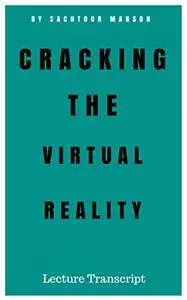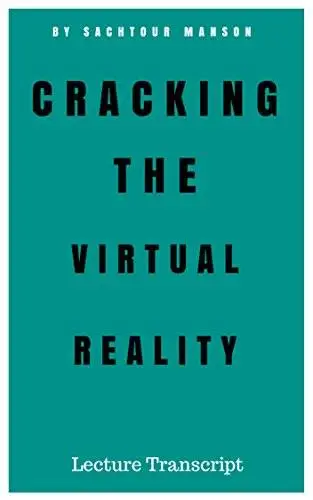Cracking the Virtual Reality: Transcript Lecture by Sachtour Manson
English | 2018 | ASIN: B07DSY4ZH5 | 155 Pages | MOBI | 516.71 KB
English | 2018 | ASIN: B07DSY4ZH5 | 155 Pages | MOBI | 516.71 KB
Now, I don't want to overclaim the results. Nothing is magic. Nothing solves all of our problems.
And not every single study does VR work better than controls on every single measure.
But as a pattern across over a decade of research, VR works better than controls.
We published work in 2013, my former student Sun Joo Ahn is now a professor at University of Georgia.
She had subjects come in. Half of them imagined, they role-played what it would be like to be colorblind while they were doing a sorting test.
They had to grab objects and sort them around. The other half, we used the head-mounted display to take away their ability to see green from red.
It was a brutally difficult, and in fact, impossible task to actually do, because you had to sort items of different colors and you couldn't see that well.
After the study was over, she gave subjects an opportunity to help people with disabilities.
She didn't ask subjects to self-report. She paid them for the study. And then said, if you want to volunteer extra, what you can do is you can surf the web, you can find websites that would be hard to read if you were visually impaired, and then you can email the web masters and ask them to change it.
When you become impaired in VR, you spend twice as much time helping others compared to when you imagined it.
And most of our studies look at behavioral measures like that. We never trust when it comes to issues of implicit bias and prejudice.
We don't trust self-report. We actually watch what people do. Another example, Hal Hershfield, who's now a professor at the Business School at UCLA, he cared about empathy to yourself, and in particular, yourself in the future.
A philosopher called Parfit has long argued that it's really easy to imagine pleasure soon.
It's very hard to imagine pain in the future. Therefore, people rarely defer gratification.
They tend to opt for pleasure now. How do you get people to push that back?
And Hal ran a series of experiments– it was his dissertation work– where in the virtual mirror, we actually scanned your face before you came in so you saw yourself in the mirror.
And your face looked just like your actual you. We then used algorithms to age yourself so that in the mirror, you went from 20-something to in your 60s or 70s.
Very intense experience. You see yourself age in front of your eyes. What we would then do is give you the opportunity to take some money now or give you more money later on if you were to put it into a savings account.
In other words, he asked people to defer gratification. What Hal discovered over a series of experiments was that compared to just about every control condition you can think of, meeting your future self in virtual reality causes you to plan for the future better than controls.
Now, we published this in the "Journal of Market Research," which is a good academic journal.
But one of the themes of today is watching this academic work we've been doing for a decade actually scale out to the world.



